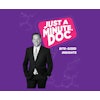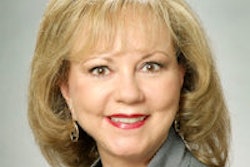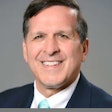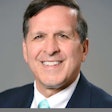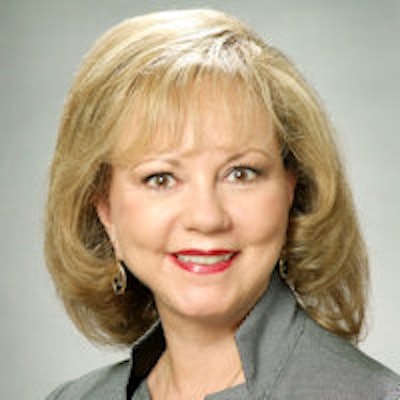
It's happened again. Mrs. Wilson just called to cancel -- a mere hour before the scheduled appointment time. Your scheduling coordinator is in a panic, trying to find someone else to take the slot, but those efforts are in vain. So instead of completing a crown case, you're left trying to figure out just how much money all these last-minute cancellations and no-shows are costing you.
 Sally McKenzie, CEO of McKenzie Management.
Sally McKenzie, CEO of McKenzie Management.I know how much broken appointments are costing you, and it can mean tens of thousands of dollars in lost revenues every year. Don't believe me? Think about this. If your practice averages two cancellations/no-shows a day, at a value of about $100 to $125 each, that means you're losing more than $40,000 a year. And that, doctor, doesn't even include the thousands of dollars in lost production you never even had the chance to diagnose.
Broken appointments not only hurt your bottom line, they also wreak havoc on your schedule. They turn an otherwise pleasant day at the practice into one filled with stress and frustration for both you and your team members. The good news is, it doesn't haven't to be this way.
While you'll never completely eliminate cancellations and no-shows at your practice, there are ways you can significantly reduce them. If you follow these tips, you'll soon notice more patients showing up for their appointments and that will lead to increased production and a growing bottom line.
Educate your patients
“Broken appointments turn an otherwise pleasant day at the practice into one filled with stress and frustration for both you and your team members.”
This may seem like a no-brainer, but take a step back and think about the quality of the education you provide. From the time they call your practice to schedule an appointment to the time they leave, you and your team members should look for opportunities to educate your patients. Use your intraoral camera to show patients what's happening in their mouths, show them educational videos to help them understand the need for treatment, and display educational materials at the front desk and in your waiting room. Answer all their questions, and help them understand the oral/systemic link and what it means for their overall health.
If you help patients understand the value of the care you provide and the consequences of not maintaining their oral health, they'll be much more likely to show up for their appointments -- and to accept the treatment you recommend.
Go over appointment details
When a patient makes an appointment, be sure to go over all the relevant details before that patient leaves the practice or hangs up the phone. Here's an example: "Mrs. Wilson, your one-hour appointment is scheduled for Wednesday, March 5, at 10 a.m. If for some reason you can't keep this appointment, please call our office at least 48 hours in advance to allow another patient to see the doctor at that time."
Confirm every appointment
Make sure your scheduling coordinator understands the importance of confirming every appointment two days in advance. Train the coordinator to find out each patient's preferred contact method -- whether it be by phone call, email, or text message -- and a preferred time of day to be contacted.
Follow up with no-shows
Your scheduling coordinator should check in with every patient who doesn't show up for an appointment -- to find a time to reschedule and also politely remind them how important it is to keep their appointments and to maintain their oral health. Follow the same procedure for patients who cancel but don't reschedule right away.
I also recommend calling patients once they're more than 10 minutes late to an appointment to let them know you're concerned about their well-being. The scheduling coordinator's script should go something like this: "Mrs. Wilson, this is Sarah from Dr. Ring's office. We were expecting you for a 3 p.m. appointment today and were concerned when you didn't arrive. Is everything OK?"
Don't schedule unreliable patients
Once a patient blows off two appointments, it's time to flag that patient as unreliable. If you put this patient on the schedule, you're just asking for a last-minute opening. Instead, politely tell these patients you'll call them when an opening is available.
Make a policy
If you don't have a broken appointment policy in place already, now is the time to create one. Make sure you tell every new patient about your policy, and politely remind existing patients about the policy every time they make an appointment. When patients know you have a set policy, they'll be less likely to blow off their appointments.
When you tell patients about your policy, remind them how last-minute cancellations and no-shows throw off your day. Your patients are busy people, and may not even think about what their broken appointment means for your practice or for other patients who could have taken that appointment time. If you help patients understand the chaos broken appointments cause, they'll be less likely to flake out when they're scheduled to be in the chair.
No one in your practice wants to deal with cancellations and no-shows. Follow my tips and you'll drastically reduce these schedule killers, leading to less stress, increased production, and a healthier bottom line.
Sally McKenzie is CEO of McKenzie Management, which offers educational and management products available at www.mckenziemgmt.com. Contact her directly at 877-777-6151 or at [email protected].
The comments and observations expressed herein do not necessarily reflect the opinions of DrBicuspid.com, nor should they be construed as an endorsement or admonishment of any particular idea, vendor, or organization.
